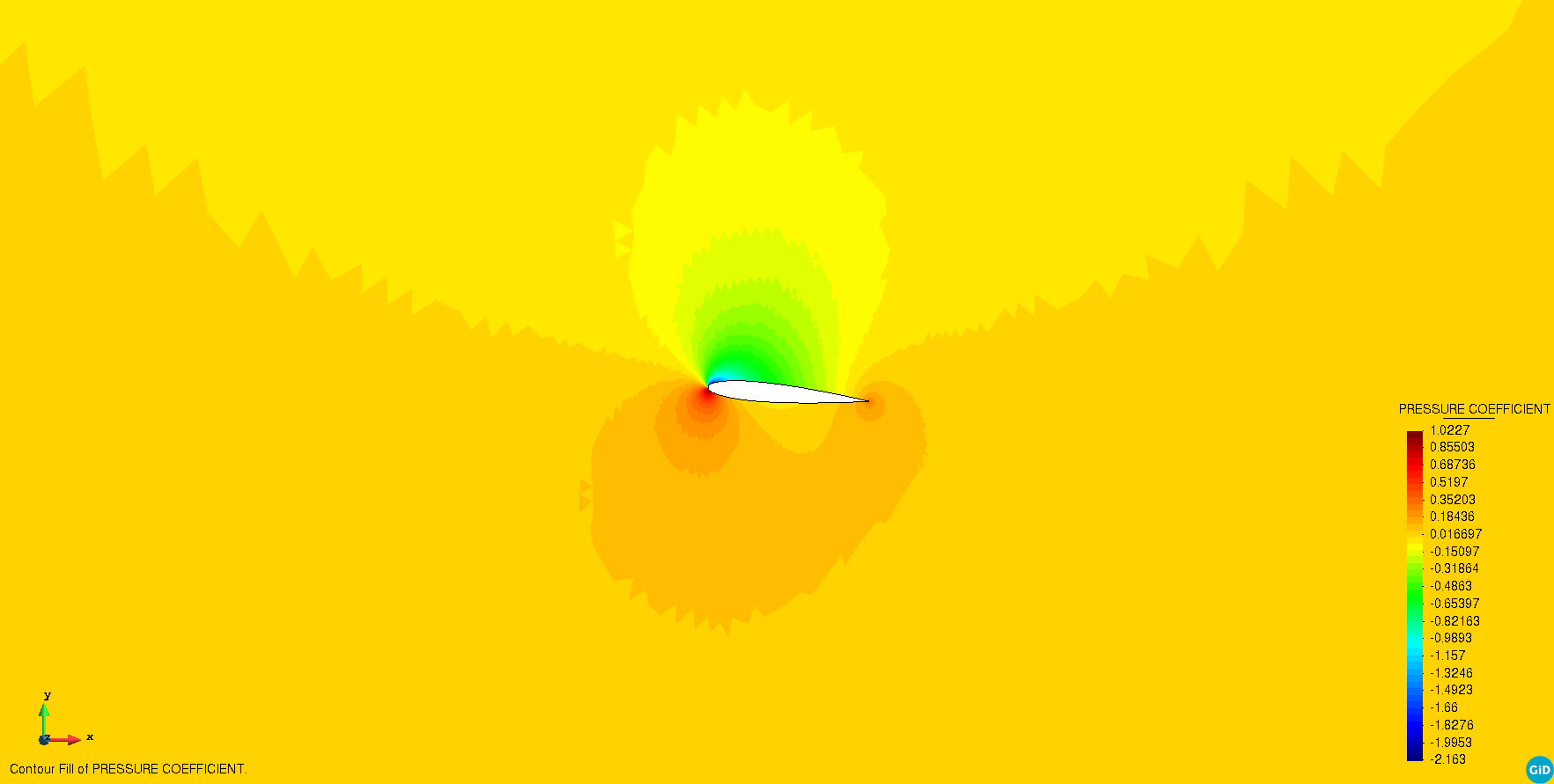Examples
All benchmarks, examples and applications cases to be run by Kratos. Note that unit tests are in Kratos repository and NOT here
Compressible Potential Flow problem
Author: Riccardo Tosi
Kratos version: 9.0
XMC version: Kratos default version
PyCOMPSs version: Kratos default version to run in serial, >2.8 to run with runcompss
Source files: Asynchronous Monte Carlo and Asynchronous Multilevel Monte Carlo
Application dependencies: CompressiblePotentialFlowApplication, LinearSolversApplications, MappingApplication, MeshingApplication, MultilevelMonteCarloApplication
Case Specification
We solve the compressible potential flow problem around an airfoil NACA0012. The problem is characterized by stochastic angle of attack and stochastic Mach number
. The problem is presented in our work [1].
The problem can be run with four different algorithms:
- Synchronous Monte Carlo (SMC),
- Asynchronous Monte Carlo (AMC),
- Synchronous Multilevel Monte Carlo (SMLMC),
- Asynchronous Multilevel Monte Carlo (AMLMC),
and by default AMC and AMLMC are selected. If one is interested in running SMC or SMLMC, it is needed to select asynchronous = false in the solver wrapper settings. Please observe that for running you may want to increase the number of realizations per level.
The Quantities of Interest of the problem are the lift coefficient and the pressure coefficient. Statistical convergence is assessed for the lift coefficient.
Similar settings are employed for Monte Carlo and Multilevel Monte Carlo. We refer, for example, to: deterministic number of samples estimation, deterministic number of indices estimation, maximum number of iterations, tolerance, confidence, etc. Such settings can be observed in the corresponding configuration file of each algorithm, located inside the problem_settings folder.
To run the examples, the user should go inside the folder-algorithm of interest and run the run_mc/mlmc_Kratos.py Python file. In case one wants to use PyCOMPSs, the user should execute run_runcompss.sh from inside the folder of interest.
Results
The pressure coefficient for the problem is shown next.

The pressure coefficient risk measure is shown next.

The power sums and the h-statistics of both the lift coefficient and the pressure coefficient can be found here. The lift coefficient expected value is consistent with literature results [2].
References
[1] Tosi, R., Amela, R., Badia, R., & Rossi, R. (2021). A parallel dynamic asynchronous framework for Uncertainty Quantification by hierarchical Monte Carlo algorithms. Journal of Scientific Computing, 89(28), 25. https://doi.org/10.1007/s10915-021-01598-6
[2] M. Davari, R. Rossi, P. Dadvand, I. López, R. W. (2019). A cut finite element method for the solution of the full-potential equation with an embedded wake. Comput Mech, 63(5), 821–833. https://doi.org/https://doi.org/10.1007/s00466-018-1624-3